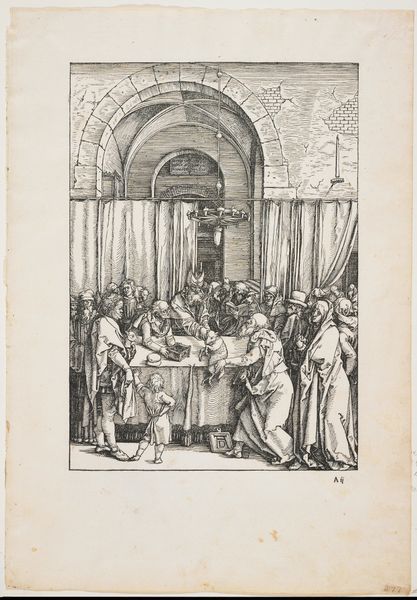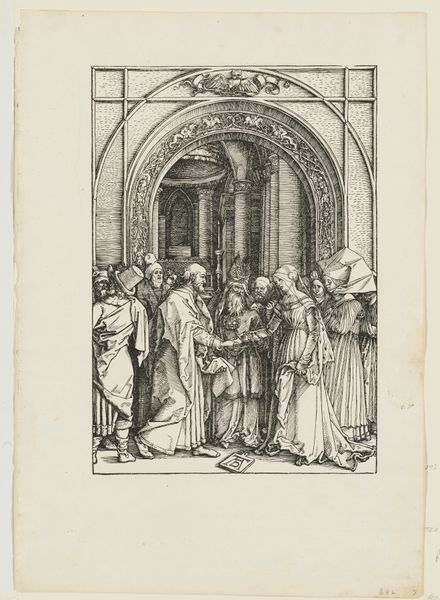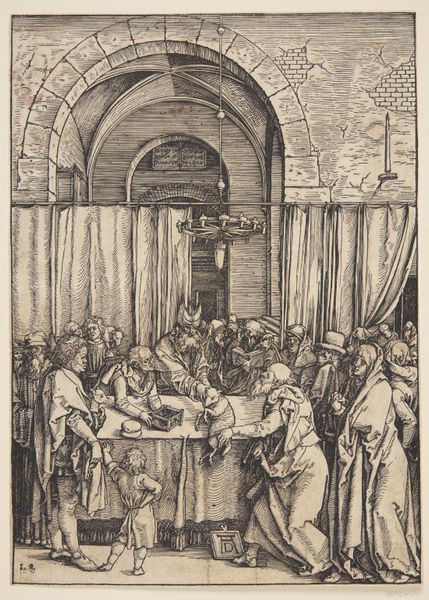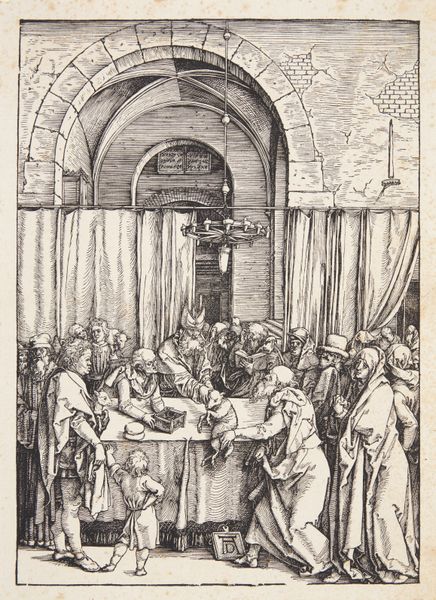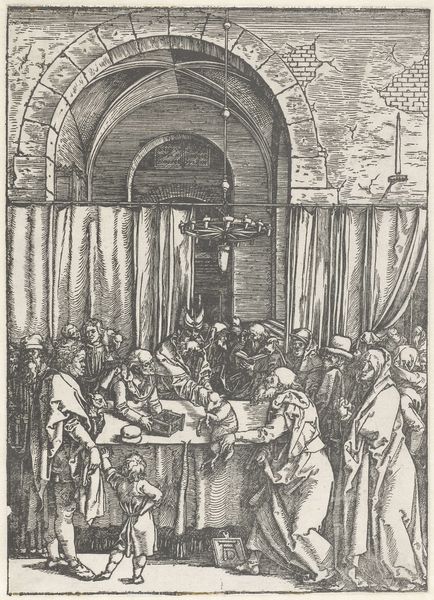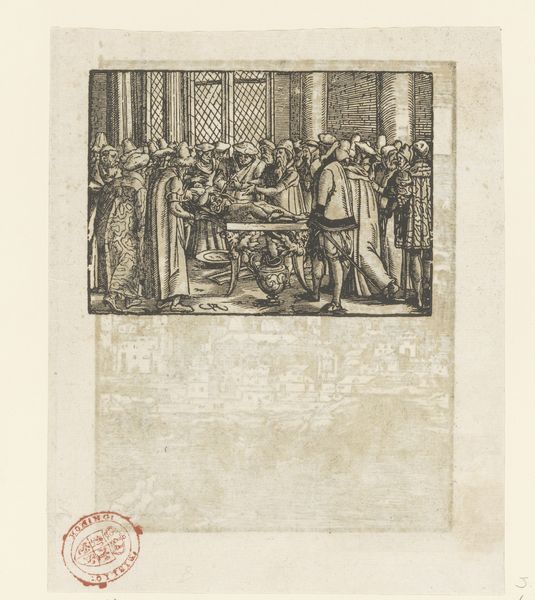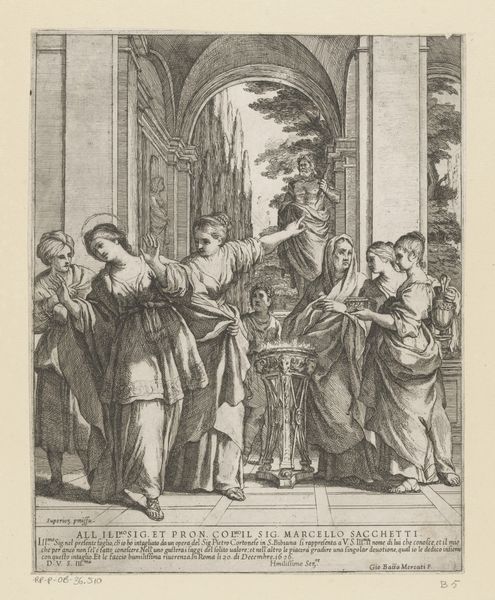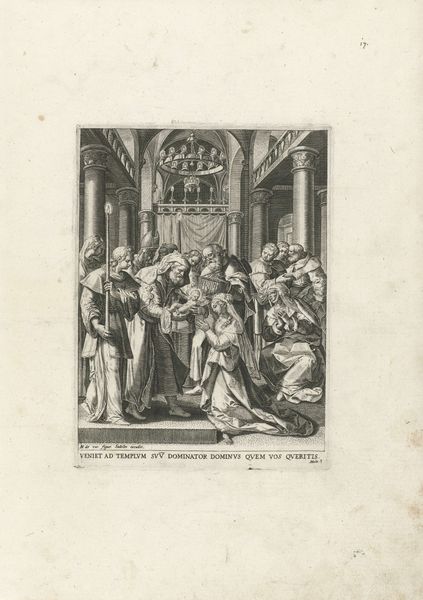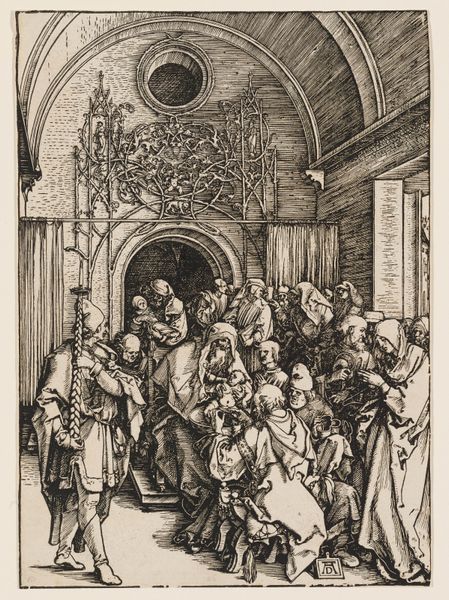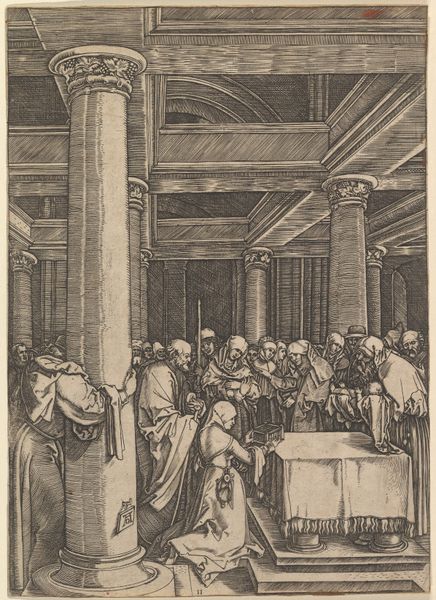
High priest refusing sacrificial lamb from Joachim, after Dürer 1495 - 1534
0:00
0:00
drawing, print, engraving
#
drawing
#
narrative-art
# print
#
history-painting
#
italian-renaissance
#
engraving
Dimensions: Sheet: 14 5/8 × 10 5/8 in. (37.2 × 27 cm) Plate: 11 9/16 × 8 5/16 in. (29.3 × 21.1 cm)
Copyright: Public Domain
Editor: This engraving by Marcantonio Raimondi, "High Priest Refusing Sacrificial Lamb from Joachim, after Dürer", created sometime between 1495 and 1534, depicts quite a crowded scene. There's definitely a sense of rejection or disapproval in the air. What do you see when you look at this piece? Curator: What interests me is how this print participates in the distribution of Dürer's imagery through reproduction. Raimondi was an engraver whose workshop industrialized printmaking, creating and distributing copies of other artists' work across Europe. This process changed how art was consumed. Consider the skilled labor and materials: the paper, the ink, the metal plates, the tools—all elements that allowed for the wider dissemination of religious narratives. What implications did this accessibility have on religious devotion? Editor: So you're saying the act of making and distributing the artwork is just as, if not more, important than the image itself? Curator: Precisely. This is not just about skillful imitation. This is about the materials and means of production that facilitated cultural exchange. Notice the layering of meaning. Dürer's initial design, Raimondi's engraving, and then the final product that circulated among different classes and regions. What transformations occur in the process of this type of production and dissemination? Editor: I hadn't thought about it that way before. I was focused on the narrative. Now, thinking about the physical making of this, the work involved and the impact on distribution, brings a totally different dimension to the piece. Curator: Yes, understanding the historical production adds complexity and reveals more. How did this new understanding impact your views? Editor: It gives me a new appreciation for printmaking as a technology that changed not only the art world, but culture itself. Thanks!
Comments
No comments
Be the first to comment and join the conversation on the ultimate creative platform.
